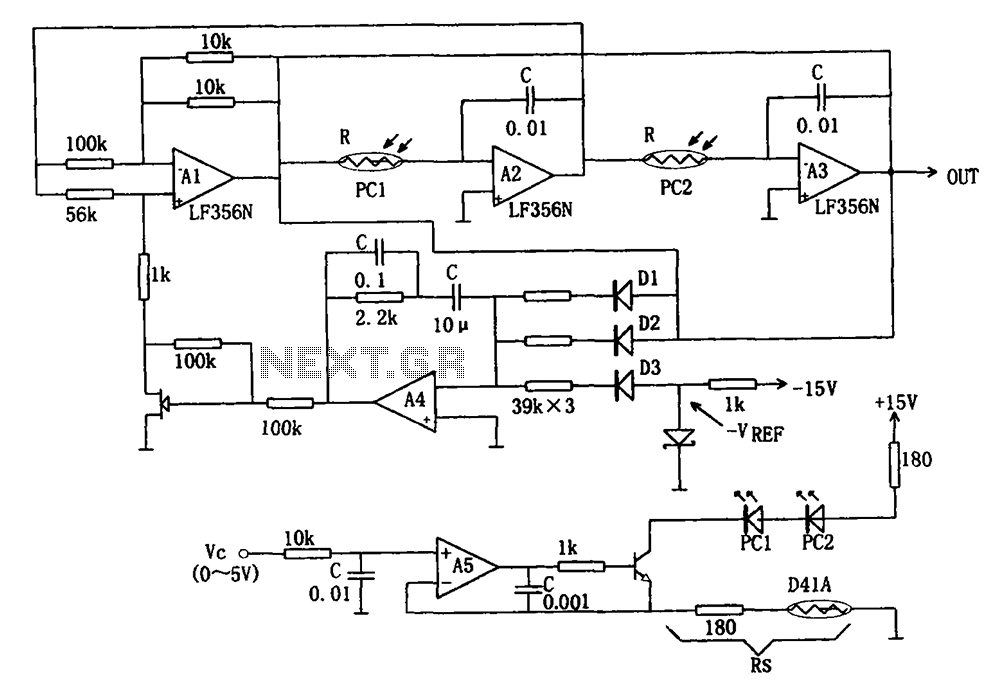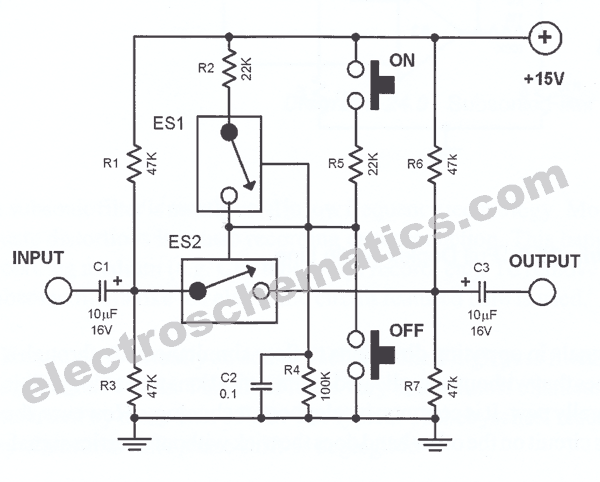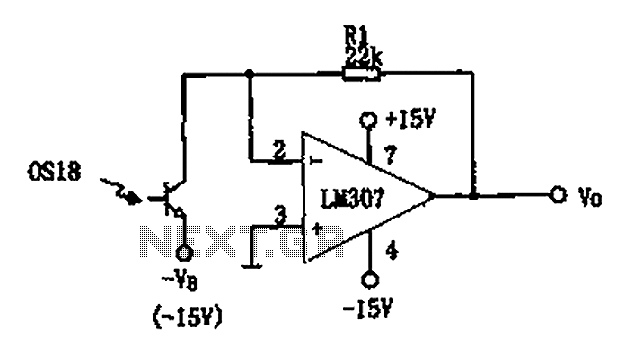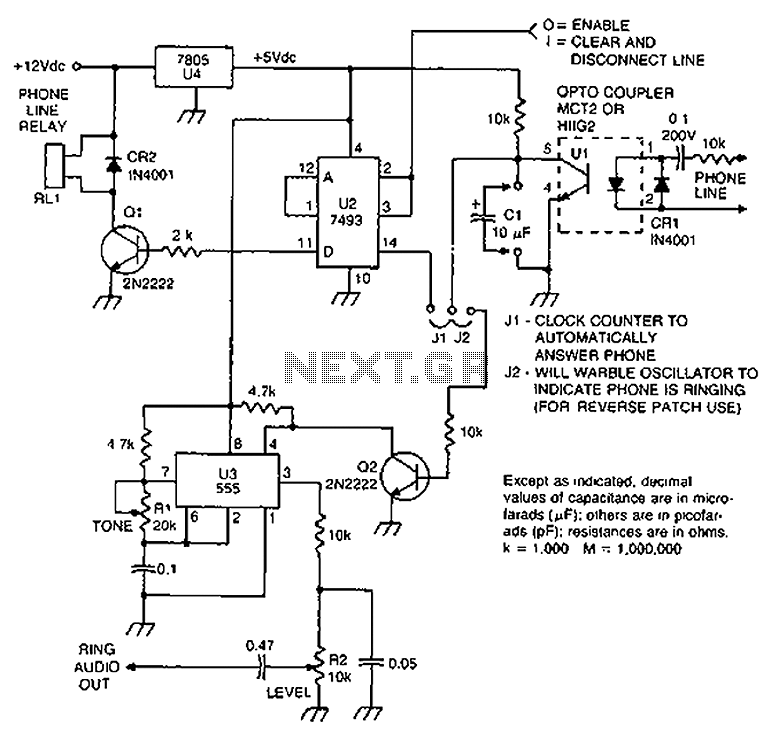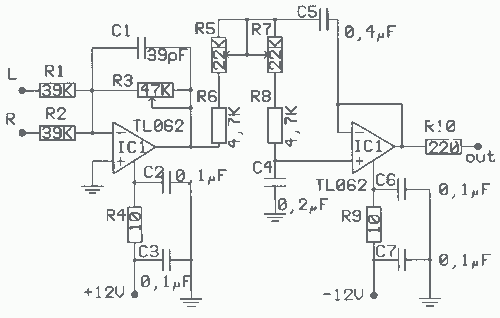
Binary gain step circuit diagram by the PGA205

A binary gain step circuit is illustrated using the PGA205, which has a gain range of 1 to 64. The circuit employs two PGA205 devices in cascade, resulting in a total gain that is the product of the individual gains, expressed as G = G1 * G2. The gain settings for each PGA205 are depicted in the accompanying figure.
The binary gain step circuit utilizing the PGA205 operational amplifiers is designed to provide a versatile range of gain settings from 1 to 64, making it suitable for various signal processing applications. The configuration of two PGA205 devices in cascade allows for the multiplication of their individual gains, enhancing the overall gain flexibility of the circuit.
In this circuit, each PGA205 can be independently configured to achieve specific gain values, which are then multiplied together to determine the total gain of the system. This allows for precise control over the amplification process, enabling the circuit to adapt to different input signal levels effectively.
The PGA205 is a programmable gain amplifier that features a range of gain settings that can be controlled digitally. This capability is essential for applications requiring dynamic adjustment of gain in response to varying signal conditions. The gain settings can typically be adjusted through a digital interface, allowing for integration with microcontrollers or digital signal processors (DSPs).
The schematic of the circuit will typically include power supply connections, input and output terminals, and control lines for setting the gain of each PGA205. Capacitive coupling may be employed at the input and output stages to block DC offsets and ensure that only the AC component of the signal is amplified. Additionally, feedback resistors may be used to stabilize the gain and improve linearity across the operational range.
In summary, the binary gain step circuit using two PGA205 amplifiers in cascade configuration provides a robust solution for applications requiring adjustable gain with high precision and flexibility. The design facilitates easy integration into larger systems where gain control is necessary for optimal performance. Binary gain step circuit is shown by PGA205 constituted a gain range of 1 to 64. The circuit uses two PGA205 cascade with a total gain of the circuit is the product of a two-st age gain, that is G G1G2. Each PGA205 gain setting shown in Figure.
The binary gain step circuit utilizing the PGA205 operational amplifiers is designed to provide a versatile range of gain settings from 1 to 64, making it suitable for various signal processing applications. The configuration of two PGA205 devices in cascade allows for the multiplication of their individual gains, enhancing the overall gain flexibility of the circuit.
In this circuit, each PGA205 can be independently configured to achieve specific gain values, which are then multiplied together to determine the total gain of the system. This allows for precise control over the amplification process, enabling the circuit to adapt to different input signal levels effectively.
The PGA205 is a programmable gain amplifier that features a range of gain settings that can be controlled digitally. This capability is essential for applications requiring dynamic adjustment of gain in response to varying signal conditions. The gain settings can typically be adjusted through a digital interface, allowing for integration with microcontrollers or digital signal processors (DSPs).
The schematic of the circuit will typically include power supply connections, input and output terminals, and control lines for setting the gain of each PGA205. Capacitive coupling may be employed at the input and output stages to block DC offsets and ensure that only the AC component of the signal is amplified. Additionally, feedback resistors may be used to stabilize the gain and improve linearity across the operational range.
In summary, the binary gain step circuit using two PGA205 amplifiers in cascade configuration provides a robust solution for applications requiring adjustable gain with high precision and flexibility. The design facilitates easy integration into larger systems where gain control is necessary for optimal performance. Binary gain step circuit is shown by PGA205 constituted a gain range of 1 to 64. The circuit uses two PGA205 cascade with a total gain of the circuit is the product of a two-st age gain, that is G G1G2. Each PGA205 gain setting shown in Figure.
